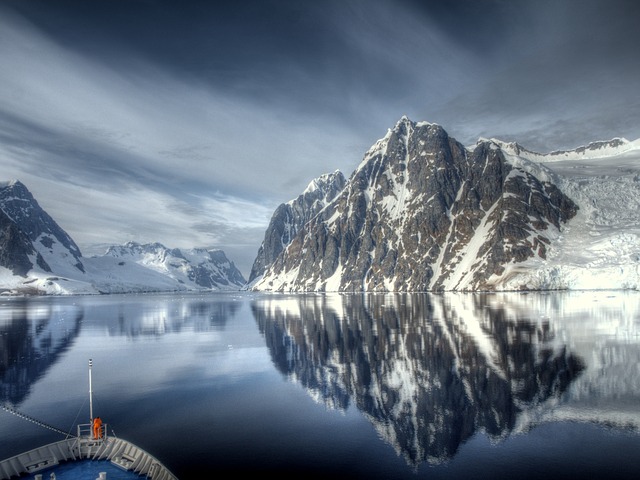Looking for a cruise with more adventure than visiting tourist ports in the Caribbean? You’re not alone. In recent years, cruises to Antarctica have become a popular trip for many to take.
As one of the world’s last frontiers, the draw is easy to see. Not only is the area largely unvisited — and untouched — by humans, it also offers unsurpassed opportunities to see natural wonders and interesting wildlife.
And as the interest in sailing to the continent has increased, so too has the opportunity to explore. Today dozens of ships sail to Antarctica, giving travelers a range of options — and price points — to visit the frozen land.
However, even if you’ve been on cruises before, you should know that traveling on a cruise to Antarctica is very different than anything else you’ve experienced. Below are some things you should consider when looking into taking a cruise to the bottom of the planet.

Your Ship Will Depart South America
If you’re a North American cruiser, then your trip starts at the airport, not the cruise port. Trips to Antarctica depart from South America — usually southern Argentina or Chile. That means you’ll need to find air arrangements to the cruise port. Some journeys actually come with airfare included in the price of the cruise. With others, you are on your own getting to the cruise port and the cost can be considerable. You’ll also want to add a few days to the start and end of your vacation to account for the extra travel time.
Most Trips Visit Only a Sliver of the Continent
Antarctica is big. It’s roughly the size of the United States and Mexico combined. However, most cruises visit only the Antarctic Peninsula — the sliver of land that juts out toward South America. There is still plenty to see on the trip, but don’t think you’ll be visiting the South Pole or seeing the entire continent. It’s similar to taking a trip to the United States and only visiting ports around Florida.
Ships Are Much Smaller on Antarctic Trips
If cruising has given you an image of massive ships with thousands of passengers and crew, then it’s time to change your view. Ships that sail to the continent are small — typically around 75 to 200 passengers. That means you are more likely to get to know your fellow passengers as well as the staff and crew.

It’s Pricier to Cruise to Antarctica
Sailing to the Caribbean can be dirt cheap. It’s not unusual to spend just a few hundred bucks to get a cheap cabin on a short cruise. Trips to Antarctica are very different. The cheapest trips will run you at least $5,000 per person, and that’s if you find a deal. You can find some ships that cost up to $30,000 per person for the cruise. Keep in mind that while the prices are higher, the trips are also longer than the average cruise. Still, there’s no doubt that for most people, the cost of sailing to Antarctica means it’s a once-in-a-lifetime trip instead of a yearly vacation.
Expect to Take a Longer Journey Than Usual
Cruises to Antarctica are much longer than your typical week-long cruise. Most trips are at least 11 days, with some lasting two to three weeks. That’s a long time to be on the ship if you aren’t used to lengthy trips. However, the days are filled with many stops and a number of opportunities to go ashore. You won’t just spend the time at sea. Bring plenty to keep you entertained as the ships don’t have as many bells and whistles like they do on larger cruise liners.
You’ll Travel During the North American Winter
Going to Antarctica… in January? To those of us in North America, it sounds insane. But remember that the seasons are opposite in the southern hemisphere. December through February is the warmest time of year at the South Pole. Temperatures will vary, but can reach the 30s (in Fahrenheit), making it cold, but manageable to visit the frozen tundra.

You’ll Get to Know Your Shipmates
While large cruises can be impersonal, spending two weeks on a ship with only a couple of hundred people means you are going to get to know your other passengers and crew. The good news is that you are likely to have a lot in common with your other shipmates. Everyone on the trip is there because they are interested in exploring one of the most remote places on the planet. It makes for an interesting topic to spark friendships over dinner.
The Luxury of Your Cruise Will Vary
Depending on which cruise ship you sail on, your accommodations and surroundings will vary. For example, National Geographic Expeditions offers ships with the white-tablecloth service and stately accommodations like you’d expect from the newest, largest cruise ships. Other (less expensive!) ships offer more spartan cabins that — while still comfortable — are more utilitarian than luxurious. Considering you are there for the scenery — and not the ship — that doesn’t seem like a major issue to us.
Get Ready for Round-the-Clock Sunshine
Traveling during the summer in the southern hemisphere means you’ll get nearly round-the-clock daylight. This portion of the planet can see sun anywhere from 18-24 hours per day, depending on how far south you travel and the exact time of year. This can cause issues for some travelers as it can take some time to adjust your body’s “clock” for when to sleep. It’s a good idea to bring a sleep mask and an alarm clock to help you keep a good sleeping schedule on your trip.

Travel Insurance Is a No-Brainer
Travel insurance is always a good idea, but on an Antarctic cruise, it’s a must-have. Between flights, the cost of the trip, weather issues in this part of the world, and its remoteness should something happen, any sort of mishap can cost a lot of money. Having some insurance will help you to have peace of mind should anything go wrong. For more on purchasing travel insurance for a cruise, read our piece here.












